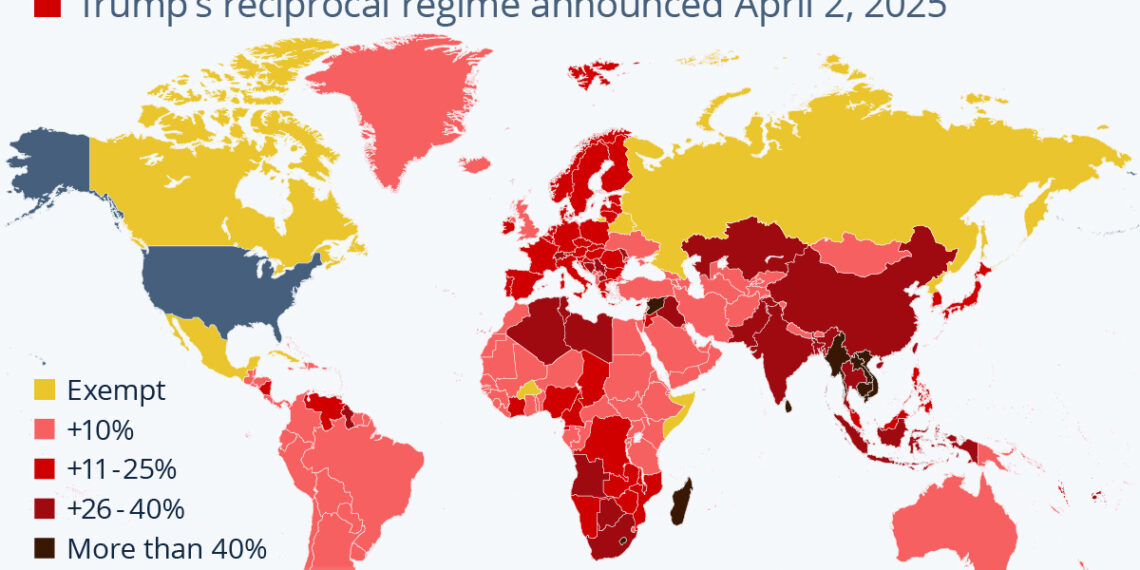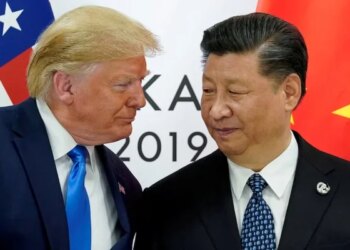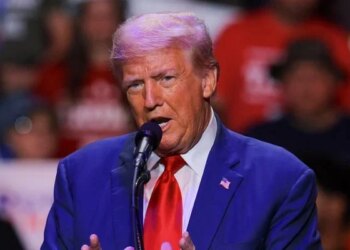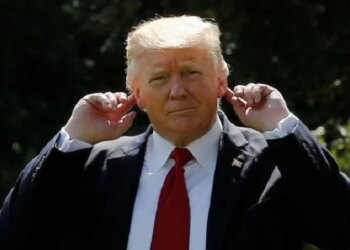Select Language:
Understanding Trump’s Tariffs: A Global Overview
In a bold and significant policy move, the Trump administration implemented additional tariffs aimed at various countries around the world. This strategy reflects an effort to curb trade imbalances and address grievances related to perceived unfair trade practices. This blog delves into the implications and specifics of these tariffs and their potential impact on global trade dynamics.
The Announcement of New Tariffs
On a pivotal Wednesday, the Trump administration declared that it would impose tariffs of at least 10 percent on a wide swath of imports from other nations. This decision was particularly focused on countries that not only levied high duties on U.S. goods but were also accused of unfair trade and currency policies.
Key Reasons Behind the Decision
The U.S. trade deficit has been a central concern for the administration, particularly with countries noted for their robust export activities and lower domestic consumption rates compared to GDP. Nations like Singapore, China, Germany, and Ireland were specifically highlighted in the administration’s justification for the tariffs. The core argument was that these countries benefit disproportionately from trade with the U.S., at the expense of domestic production and employment.
The Targeting of China
China stood out as the predominant target of Trump’s tariff policy. As the country with the highest trade deficit with the United States, it faced escalated tariffs designed to counterbalance the perceived economic imbalance. Initially facing a standard tariff, China’s rate surged to a staggering 54 percent in response to these trade policies.
Broader Implications for Trade with China
The ongoing trade tensions with China have broad implications for global supply chains, affecting industries that rely on components or goods manufactured in China. Companies may face higher costs, which could translate to increased prices for American consumers, prompting discussions around the effectiveness of tariffs in reshaping trade relations.
Tariffs on Other Countries
While China received the most attention, numerous other countries also faced escalated tariffs as part of the administration’s wider strategy. Notably, countries imposing high import duties on U.S. goods were hit the hardest.
Specific Cases of Increased Tariffs
Countries such as India, Tunisia, and Algeria saw their exports to the U.S. subjected to significant additional tariffs:
- India: Tariffs increased by 26 percent.
- Tunisia: Tariffs increased by 28 percent.
- Algeria: Tariffs increased by 30 percent.
This action demonstrates the administration’s commitment to technology and industrial tariffs, asserting that reciprocity in tariff levels is essential for fair trade.
European Union Countries and Other Targets
Even nations that are generally recognized for having low tariff structures were not spared from increased tariffs.
Tariff Increases for the European Union
Countries within the European Union faced tariffs of 20 percent, reflecting the administration’s critical stance towards the EU’s existing trade practices and tariffs.
Additional Tariffs in Response to Specific Issues
The U.S. administration also erected tariffs based on particular goods. An interesting example is Indonesia, which suffered a reciprocal tariff of 32 percent. This additional tax was specifically levied in response to the nation’s 30 percent duty on U.S. ethanol imports.
Impacts on Countries Specializing in Low-Cost Goods
Several countries known for sending a significant volume of low-cost products—such as footwear, apparel, and furniture to the United States—were similarly affected by higher tariffs. The additional duties assigned to these nations were often disproportionate to their existing tariff levels:
- Vietnam: 46 percent
- Cambodia: 49 percent
- Bangladesh: 37 percent
- Sri Lanka: 44 percent
The implications of these tariffs extend beyond pricing; they are expected to disrupt supply chains and may compel manufacturers to seek alternative markets for their goods.
The Consequence of Tariff Policies
The decision to implement these tariffs aligns with the administration’s ideology regarding trade, emphasizing a more protectionist approach as a means of safeguarding American interests. Critics argue, however, that such measures could lead to retaliatory actions from other countries and a potential trade war, thereby complicating global commerce further.
Examining the Economic Landscape
The escalation of tariffs under the Trump administration has opened a discourse on the future of international trade practices. Stakeholders across various sectors continue to monitor the situation closely as they navigate the evolving landscape shaped by these fiscal policies. The long-term effects of these tariffs on both the U.S. economy and global trade remain to be seen, presenting a compelling case for ongoing analysis and engagement from economists, policymakers, and business leaders alike.







